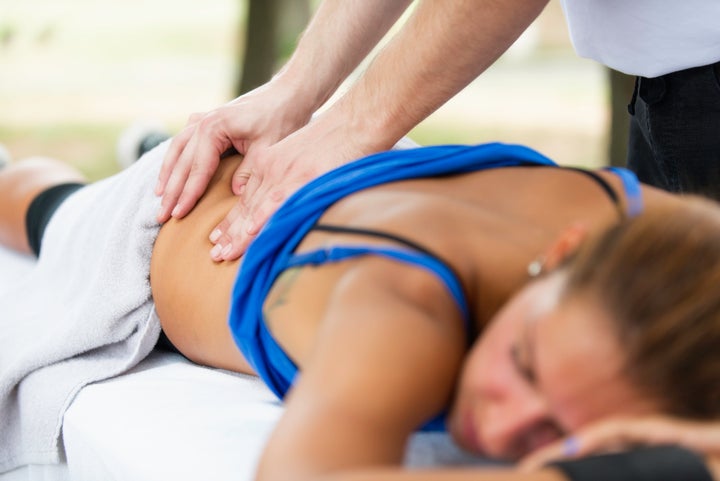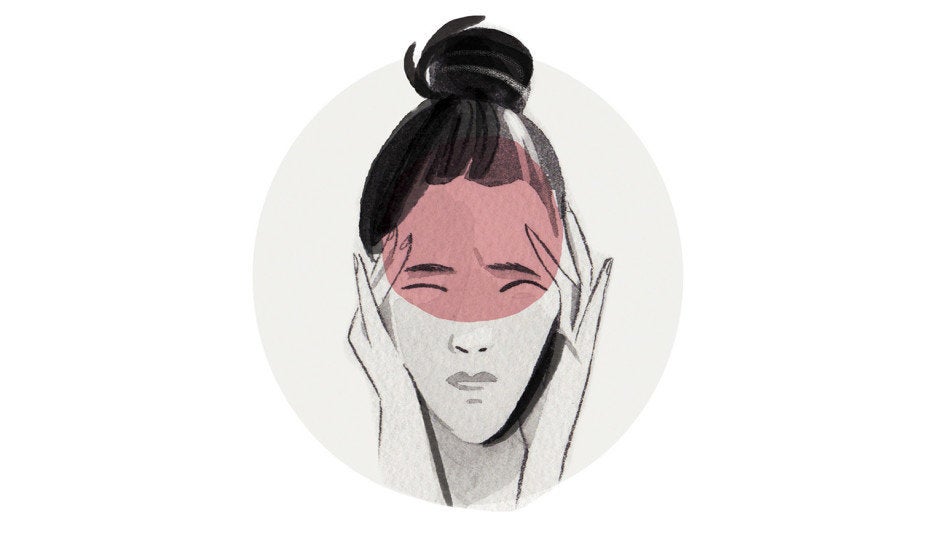When Julie Price threw out her back for the second time in December, she knew she needed help.
“It was immobilizing and intense,” Price, a 37-year-old New York City-based accountant, told The Huffington Post.
Price, a former athlete, felt she had lost a lot of strength after two pregnancies. She also has flat feet, alignment issues and “bad knees,” so she realized she couldn’t take care of everything alone.
Although the pain started to lessen on its own, Price went to see Allen Chen, director of physiatry at NewYork-Presbyterian/The Spine Hospital, who specializes in treating spine injuries.
Chen, after ruling out structural problems with her spine, prescribed physical therapy once a week and home exercises. She doesn’t have any pain now, and she feels stronger, not just in her back but also in her core and legs, she said.
“Last week I was able to squat without anything hurting, which I never thought would happen,” she said. The physical therapy “has made a world of difference.”
The American College of Physicians, in new guidelines released this week, says a lot more patients should receive the type of treatment Chen prescribed for Price.
Doctors need to educate their patients that lower back pain is like a common cold ― unpleasant but hard to treat and likely to go away on its own. And chances are painkillers won’t do much to help.
“Low back pain is very common, and most [of it] improves over time regardless of treatment,” Nitin Damle, president of the American College of Physicians and a practicing internist, told HuffPost.
That’s a significant task considering that estimates suggest up to a fourth of all adults in the U.S. have had some back pain for at least one day in the past three months. It’s one of the most common reasons Americans go to a doctor.
The new guidelines: Don’t even bother with Tylenol
The new ACP guidelines recommend non-drug treatments, such as massage, yoga, tai chi and acupuncture, as the first line of defense against back pain. Only if those are not effective, nonsteroidal anti-inflammatory drugs (or NSAIDs, like aspirin and ibuprofen) should be used. Then, if those are ineffective, prescription drugs can be tried.
Another significant change to the guidelines is that acetaminophens (such as Tylenol, Excedrin and some varieties of Sudafed) should not be used at all for back pain, since recent evidence shows that those over-the-counter painkillers do not actually help back pain.
The guidelines also recommend that doctors prescribe opioids only as a last resort, after other drug and non-drug therapies did not work, and after the doctor has explained the risks and benefits to the patient.
Overuse of over-the-counter painkillers, common among people with lower back pain, can lead to health risks, including heart and gastrointestinal problems. And the serious risks associated with opioid misuse ― including addiction, overdose and death ― have led the Centers for Disease Control and Prevention to issue its own guidelines for reducing prescription opioid use across all medical disciplines.
A big benefit of the new guidelines is that they will help patients avoid the risks associated with NSAIDs, Tylenol and, most significantly, opioids, Chen said. Many of the recommended non-drug therapies included in the guidelines ― yoga, tai chi, massage, heat and acupuncture therapy, among others ― are very low risk, he added.
It’s also important to note that the guidelines apply only to low back pain that stays in the back (not the kind that radiates down the leg or to other areas).
Massage, yoga, acupuncture first
“There’s been a push over the past few years in my practice and in many others to push away from medications ― particularly opioids,” Chen told HuffPost in a phone interview.
Previous treatment guidelines for low back pain from 2007 had recommended NSAIDs be used along with a non-drug treatment. “But I think the focus on non-pharmacological treatments for low back pain, opposed to medications ― particularly opioids ― is long overdue,” Chen said.
(ACP considers any guidelines out of date after five years and subsequently subject to review.)

Accessible alternative therapy is more important than ever
The guidelines themselves do not make recommendations for what treatments insurance companies should cover ― and just because the guidelines recommend a certain treatment does not mean your policy will cover it.
“Those may end up being out-of-pocket costs,” Chen said.
Plus, not all of the treatments in the guidelines are even available to all patients depending on where they live. For example, estimates suggest that in the U.S. there will be shortages of physical therapists in as many as 48 states by 2030 (based on current trends in needs for physical therapy and projected numbers of therapists).
For Price, getting to physical therapy once a week is accessible and is covered by her employer’s health insurance. But there are limits on how many sessions the plan will cover, she said.
“It does factor into my thoughts of how long do I need to continue” the therapy, she said.
But she’s more than happy that she’s pain-free without drugs. She did take a few doses of Aleve or Advil when her pain first started, but in general she tries to avoid medication, she said.
“The goal now is to get [my back] strong ― and better aligned ― so I don’t throw it out again.”
“I knew losing the strength I used to have before kids was most likely the biggest issue ― and that learning how to get that done right and fit it back into my new mommy lifestyle would be what I really needed,” Price said.
This reporting is brought to you by HuffPost’s health and science platform, The Scope. Like us on Facebook and Twitter and tell us your story: scopestories@huffingtonpost.com.
Sarah DiGiulio is The Huffington Post’s sleep reporter. You can contact her at sarah.digiulio@huffingtonpost.com.
